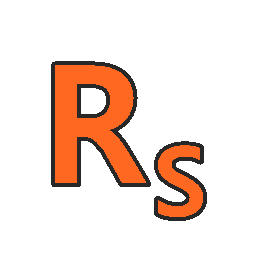
About Course
Applied Statistics for Data Science.
Why should you learn Applied Statistics for Data Science now?
- Jobs in Analytics – Data is everywhere, and with that is the need to have professionals who can interpret that data which requires a solid understanding of statistical concepts
- Demand is only going to go up – With more organizations realizing the potential of statistics for their business, data analysts knowing statistics will excel over the ones just knowing technical tools. For a good Data Analyst, it is THE backbone!
- Build your Career in Data Science, Artificial Intelligence and Data Analysis – Statistics remains the fundamental skill set of those pursuing a career in Data Science, Deep Learning, Artificial Intelligence, Management Consulting, Financial Analysis
- Improve your understanding of the world – Statistics is used in everyday life, to describe the stock market, house prices, economic performance, business and much much more. Improve your data literacy and equip yourself with the ability to communicate in the language of the future.

What is Statistics all about?
Understanding statistics is essential to understand research in the social and behavioral sciences. In this course you will learn the basics of statistics; not just how to calculate them, but also how to evaluate them. This course will also prepare you for the next course in the specialization – the course Inferential Statistics. In the first part of the course we will discuss methods of descriptive statistics. You will learn what cases and variables are and how you can compute measures of central tendency (mean, median and mode) and dispersion (standard deviation and variance). Next, we discuss how to assess relationships between variables, and we introduce the concepts correlation and regression. The second part of the course is concerned with the basics of probability: calculating probabilities, probability distributions and sampling distributions. You need to know about these things in order to understand how inferential statistics work. The third part of the course consists of an introduction to methods of inferential statistics – methods that help us decide whether the patterns we see in our data are strong enough to draw conclusions about the underlying population we are interested in. We will discuss confidence intervals and significance tests. You will not only learn about all these statistical concepts, you will also be trained to calculate and generate these statistics yourself using freely available statistical software.
Statistics encompasses the collection, analysis, and interpretation of data and provides a framework for thinking about data. Statistics is used in many areas of scientific and social research, is critical to business and manufacturing, and provides the mathematical foundation for machine learning and data mining.
In this Applied Statistics for Data Science course, students will gain a comprehensive introduction to the concepts and techniques of statistics as applied to a wide variety of disciplines.
This Applied Statistics for Data Science course covers basic statistics, such as calculating averages, medians, modes, and standard deviations. With easy-to-understand examples combined with real-world applications from the worlds of business, sports, education, entertainment, and more.
This Applied Statistics for Data Science course provides you with the skills and knowledge you need to start analyzing data. You’ll explore how to use data and apply statistics.
Who this Applied Statistics for Data Science course is for:
- Aspiring Data Scientists, Machine Learning Engineers, Business Analysts and Data Analysts
- Professionals looking to expand their analytical skillset
- Academics looking for a crash course in statistics for research
- Those who seek a better analytical understanding of the world around us
- Business Executives looking to fluently speak the language of data and insights
- Students looking to ace fundamental statistics and probability courses
Course Content
Applied Statistics for Data Science
-
Statistical Thinking – Imputing Missing Values
00:00 -
Stationarity and Differencing in Time Series
00:00 -
Granger Causality Statistical Test for Time Series
00:00 -
Time Series Non Stationary Statistical Test – KPSS and ADF
00:00 -
Statistical Thinking – Polynomial Regression and Non Linear Relationship
00:00 -
Time Series Data Analysis and Exploratory Analysis – A Deep Dive
00:00 -
Normal Distribution – Test and Transformation
00:00 -
Statistical Thinking – Segmentation and Data Analysis
00:00 -
Statistical Thinking – Correlations and Relationships
00:00 -
Statistical Thinking – Data Understanding and Preparation
00:00 -
Statistical Thinking – Cramer’s V Test – Categorical association
00:00 -
Statistical Thinking – Chi Square Test – Feature Selection
00:00 -
Accelerating Data Analysis using Python
00:00
Student Ratings & Reviews

